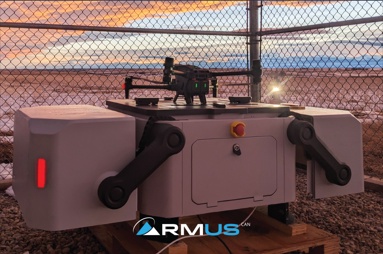Introduction:
In recent years, autonomous drones have revolutionized numerous industries by providing unprecedented capabilities and efficiencies. These unmanned aerial vehicles (UAVs) equipped with advanced sensors, artificial intelligence, and autonomous flight capabilities have opened up new possibilities across a wide range of sectors. In this article, we will explore the top 10 applications of autonomous drones in various industries and their impact on productivity, safety, and innovation.
Agriculture:
Autonomous drones have become an invaluable tool in modern agriculture. Equipped with multispectral or thermal cameras, they can capture high-resolution images of crops and provide farmers with real-time data on plant health, water stress, and nutrient deficiencies. This information enables farmers to optimize irrigation, fertilizer usage, and pest control, leading to improved crop yields and reduced environmental impact.
Construction and Infrastructure:
In the construction and infrastructure sectors, autonomous drones offer significant advantages. They can quickly and accurately survey construction sites, monitor progress, and generate 3D models. This helps project managers identify potential issues, track inventory, and improve workflow efficiency. Drones also enhance safety by inspecting hard-to-reach structures such as bridges and tall buildings, reducing the risk of accidents for human workers.
Delivery and Logistics:
Autonomous drones have the potential to revolutionize the delivery and logistics industry. Companies like Amazon and UPS are already experimenting with drone delivery services. These drones can transport small packages over short distances, bypassing traffic congestion and reducing delivery times. With advanced obstacle avoidance systems and accurate navigation capabilities, autonomous drones can safely and efficiently deliver goods in urban and remote areas.
Search and Rescue:
In emergency situations, autonomous drones can play a critical role in search and rescue operations. Equipped with thermal cameras and sensors, they can quickly cover large areas and identify missing persons or survivors in disaster-stricken areas. Autonomous drones can also drop essential supplies to those in need, providing immediate assistance in remote or inaccessible locations.
Environmental Monitoring:
Autonomous drones have immense potential for environmental monitoring and conservation efforts. These drone autonomy based autonomous drone can monitor wildlife populations, track migration patterns, and detect illegal activities such as poaching or deforestation. With their ability to cover vast areas efficiently, drones contribute to the preservation of natural habitats and assist researchers in gathering valuable data for conservation initiatives.
Media and Entertainment:
The media and entertainment industry has embraced autonomous drones for capturing stunning aerial footage in movies, commercials, and sporting events. With their ability to execute complex flight paths and stabilize cameras, drones provide unique and immersive perspectives that were previously inaccessible or cost-prohibitive. This technology has transformed the way stories are told, enhancing visual experiences for audiences worldwide.
Inspections:
Autonomous drones are revolutionizing the inspection of critical infrastructure such as power lines, pipelines, and wind turbines. With high-resolution cameras and sensors, drones can identify maintenance needs, detect structural defects, and collect data on asset conditions. This reduces the need for manual inspections, minimizes human risk, and enables timely maintenance, thereby improving overall operational efficiency.
Mining and Resource Exploration:
In the mining and resource exploration industry, autonomous drones are used to survey vast areas and collect geospatial data. By capturing aerial images and creating 3D models, drones enable accurate mapping, mineral exploration, and environmental impact assessments. These capabilities enhance the efficiency of resource extraction and minimize the environmental footprint of mining operations.
Insurance and Risk Assessment:
Autonomous drones are increasingly employed by insurance companies for risk assessment and claim inspections. Drones equipped with high-resolution cameras and sensors can quickly assess property damage after natural disasters or accidents. This speeds up the claims process and improves accuracy, leading to more efficient settlements and reduced fraud.


No comments yet